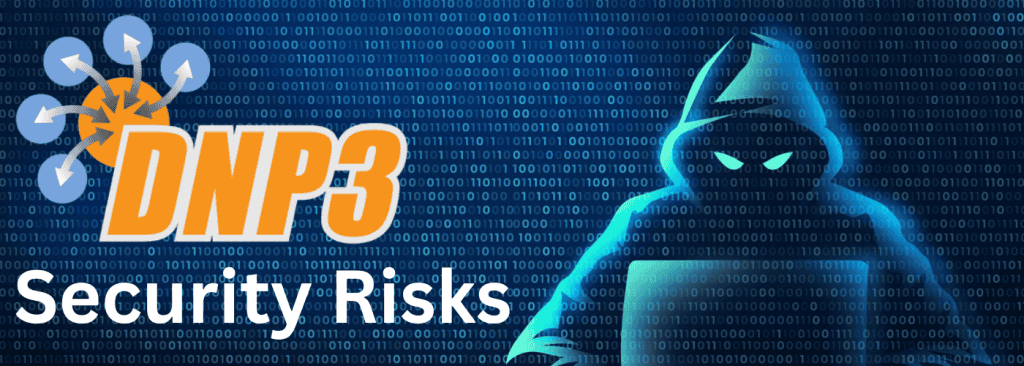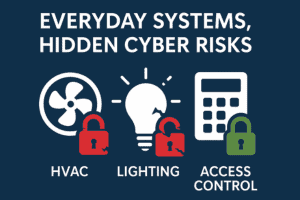DNP3 Cybersecurity Risks: How to Protect ICS & SCADA Systems
DNP3 Cybersecurity Risks
Quick Summary
- DNP3 is widely used in ICS and SCADA but faces significant security gaps, especially in legacy systems.
- Common threats include man-in-the-middle attacks, packet manipulation, and master impersonation.
- Legacy compatibility issues mean many systems still lack encryption and authentication.
- Mitigation requires strong authentication, encryption, integrity protection, and network segmentation.
- Zero Trust overlays, such as Veridify’s DOME platform, can secure any DNP3 device without replacing existing hardware.
Why DNP3 Security Matters
The Distributed Network Protocol version 3 (DNP3) is a key communications standard for industrial control systems (ICS) and supervisory control and data acquisition (SCADA) networks. It was designed for reliability and efficiency, but in critical infrastructure environments, security weaknesses in DNP3 can leave systems exposed to severe cyber threats — including disruption of operations and physical equipment damage. Some of the key security risks associated with the DNP3 protocol include:
Top Cybersecurity Risks in DNP3 Systems
1. Lack of Authentication
Traditional DNP3 versions often lack strong authentication, making it possible for attackers to impersonate devices or inject malicious commands.
2. Limited Encryption
Many legacy DNP3 systems transmit unencrypted data, exposing sensitive communications to interception. Even when encryption is implemented, weak algorithms or poor configurations can undermine security.
3. Insecure Command & Control Messages
If not properly secured, control messages can be altered by attackers to manipulate industrial devices and processes.
4. Lack of Integrity Protection
Without integrity checks, DNP3 traffic can be tampered with, resulting in inaccurate readings, unsafe operations, and control errors.
5. Denial-of-Service (DoS) Vulnerabilities
Attackers can overload the network or send malformed packets to disable or degrade system performance.
6. Legacy Compatibility Risks
Outdated DNP3 systems may lack modern security features, making them prime targets while still needing to remain operational for business continuity.
Common DNP3 Attack Methods
A study was published in 2002 (Risk Analysis of DNP3 Attacks [1]) that used some numerical methods to quantify the risks from different types of attacks. The attack types are summarized below:
- Man-in-the-Middle (MiTM) – Intercepts and alters communications between endpoints.
- Packet Assembly & Injection – Creates and inserts malicious packets into the network stream.
- Master Impersonation – Fools outstations into accepting commands from unauthorized masters.
- Function Code Modification – Sends altered function codes to trigger restarts or disable messages.
- Nmap Reconnaissance – Scans for DNP3 outstations and vulnerabilities.
- Replay Attacks – Delays or replays packets to disrupt normal communications.
Real-World Attack Scenarios
Attack approaches and potential impact:
- Disable Unsolicited Messages – Prevents proactive alerts from outstations.
- Cold/Warm Restarts – Forces devices offline temporarily by restarting systems or applications.
- Slave Discovery – Identifies active devices for further targeting.
- Initialize Data – Resets device data, masking the actual operational status.
- Stop Application – Shuts down DNP3 services to halt communication.
- Replay – Delays responses to disrupt control operations.
Best Practices for DNP3 Cyber Risk Mitigation
To mitigate these DNP3 security risks, organizations should implement best practices for securing DNP3 communications, such as:
- Strong Authentication – Implement device-to-device / machine-to-machine verification.
- Encryption – Secure sensitive data in transit with robust cryptography.
- Integrity Protection – Use secure tunnels and packet signing to detect tampering.
- Patching & Updates – Regularly apply security updates to DNP3 software.
- Security Assessments – Conduct penetration tests and vulnerability scans.
- Network Segmentation – Isolate ICS networks from corporate IT and internet-facing systems.
- Quantum-Ready Migration Planning – Prepare for emerging threats from quantum computing.
Authenticating all DNP3 devices and encrypting communication between them provides strong cybersecurity protection and reduces the attack surface. Since not all DNP3 stations are capable of using DNP3 Secure Authentication, a security overlay can be deployed that uses a NIST-compliant Zero Trust framework.
Zero Trust Security with DOME
Veridify’s DOME platform delivers authentication and encryption for any DNP3 device, regardless of manufacturer or software version, without replacing existing hardware. Based on a NIST-compliant Zero Trust framework, DOME:
-
Authenticates all DNP3 devices
-
Provides protection regardless of manufacturer or software version
-
Encrypts traffic between devices
-
Works transparently with no network changes
-
Protects both modern and legacy systems
Example Setup: A DOME Sentry at the master station and one or more at each remote outstation secure communications end-to-end without altering existing DNP3 devices.
Contact us to learn more DOME for securing DNP3 devices.
Key Takeaways
- DNP3 security weaknesses can lead to serious ICS/SCADA disruptions.
- Legacy systems often lack encryption and authentication, increasing vulnerability.
- Attack methods range from MiTM and replay attacks to master impersonation.
- Mitigation requires layered defenses: authentication, encryption, segmentation, and regular updates.
- Zero Trust overlays like Veridify’s DOME can secure both new and legacy DNP3 deployments with minimal disruption.
References
[1] ieeexplore.ieee.org/document/9850291
—
Blog Post Summary – All of our posts listed on one page back through 2019







